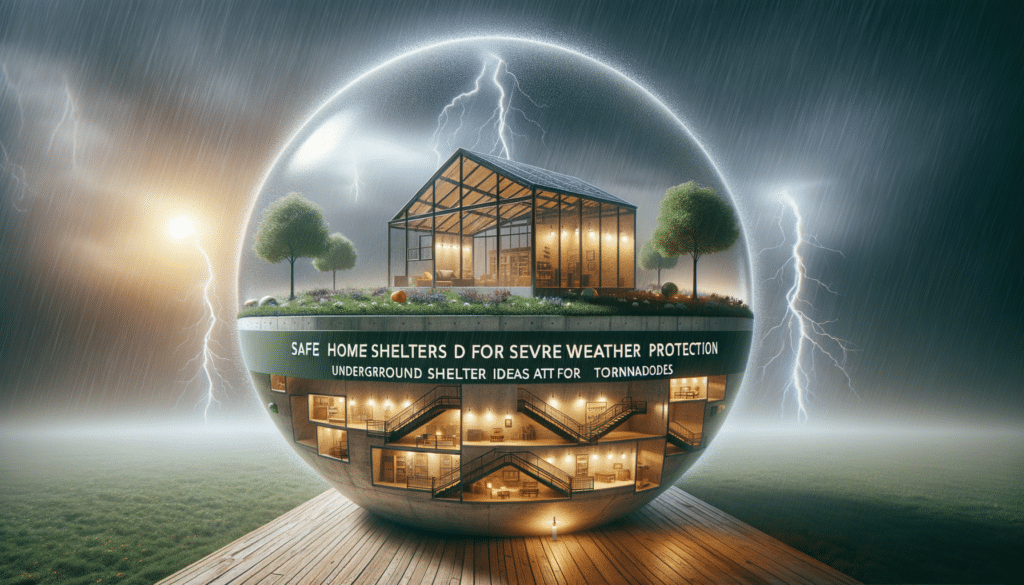Introduction: The Importance of Tornado Shelters
Severe weather events, particularly tornadoes, pose significant risks to life and property. As climate change continues to influence weather patterns, the frequency and intensity of these storms are expected to rise. Tornado shelters offer a practical solution, providing a safe haven during these unpredictable events. Understanding the different types of shelters and their features can help homeowners make informed decisions to protect their families.
Safe Home Shelters for Severe Weather
Home shelters designed for severe weather are crucial for ensuring safety during tornadoes and other extreme conditions. These shelters are typically constructed to withstand high winds and flying debris, offering a secure refuge within or near the home. Common types include above-ground safe rooms and inground storm shelters. Above-ground safe rooms are fortified structures built to resist the impact of debris and wind, often constructed with reinforced concrete or steel. They are usually installed within the home, such as in a garage or basement, providing easy access during emergencies.
Inground storm shelters, on the other hand, are installed below ground level, offering protection from the most intense elements of a storm. These shelters are often made from steel or concrete and are designed to prevent flooding and withstand high pressure. When choosing a home shelter, homeowners should consider factors such as location, size, and accessibility. It is also essential to ensure that the shelter meets safety standards set by relevant authorities.
Underground Protection Solutions
Underground protection solutions are highly effective for safeguarding against severe weather. These solutions include underground bunkers and tornado shelters that provide robust protection from high winds and debris. Underground bunkers are typically larger than standard storm shelters, offering additional space for storage and extended stays if necessary. They are often equipped with ventilation systems, emergency supplies, and communication devices to ensure occupants can remain safe and comfortable during prolonged weather events.
When considering underground protection, it is important to evaluate the site’s soil composition and drainage capabilities to prevent water ingress. Additionally, the construction materials should be chosen for their durability and resistance to corrosion. Properly installed underground shelters offer peace of mind, knowing that they provide a secure refuge from even the most severe storms.
Storm-Ready Shelter Ideas
Creating a storm-ready shelter involves more than just choosing the right structure; it requires careful planning and preparation. One innovative idea is to design a multi-purpose space that serves as both a daily living area and a storm shelter. This can be achieved by integrating a fortified room within the home that doubles as a study or home office, ensuring it is easily accessible and regularly maintained.
Another idea is to incorporate renewable energy sources, such as solar panels, to power essential systems within the shelter. This ensures that occupants have access to electricity during power outages. Additionally, stocking the shelter with emergency supplies, such as food, water, first aid kits, and communication devices, is essential for preparedness. Regular drills and updates to the emergency plan can also enhance readiness, ensuring that all family members know how to respond when severe weather strikes.
Conclusion: Choosing the Right Shelter for Your Needs
In conclusion, tornado shelters are a vital component of home safety in regions prone to severe weather. By understanding the different types of shelters, such as inground storm shelters and underground bunkers, homeowners can make informed decisions that best suit their needs. Whether opting for an above-ground safe room or an underground solution, the key is to ensure the shelter meets safety standards and is equipped with the necessary supplies and features. By investing in a reliable tornado shelter, families can gain peace of mind knowing they have a secure refuge during extreme weather events.


